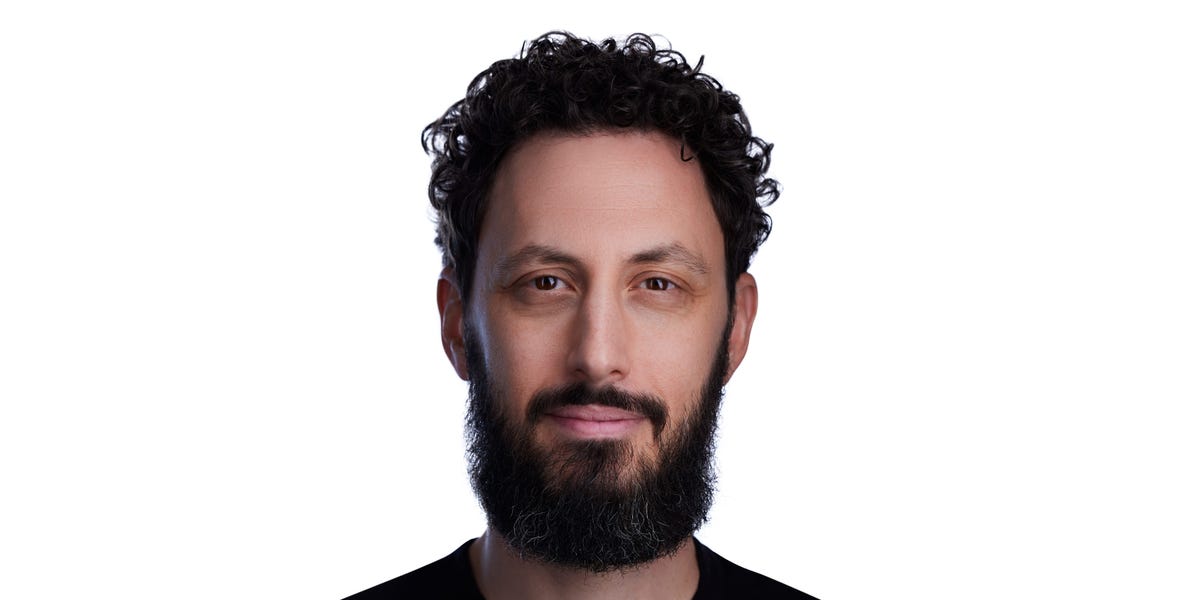In Paola Arlotta’s lab at Harvard is a long, windowless hallway that is visited every day by one of her scientists. They go there to inspect racks of scientific muffin pans. In every cavity of every pan is a pool of pink liquid, at the bottom of which are dozens of translucent nuggets no bigger than peppercorns.
The nuggets are clusters of neurons and other cells, as many as two million, normally found in the human brain. On their daily rounds, the scientists check that the nuggets are healthy and well-fed.
“No first-year students walk in that corridor,” Dr. Arlotta said. “You have to be experienced enough to go there, because the risk is very high that you’re going to mess up the work that took years to build.”
The oldest nuggets are now seven years old. Back in 2018, Dr. Arlotta and her colleagues created them from skin cells originally donated by volunteers. A chemical cocktail transformed them into the progenitor cells normally found in the fetal human brain.
The cells multiplied into neurons and other types of brain cells. They wrapped their branches around each other and pulsed with electrical activity, much like the pulses that race around inside our heads. One such nugget can contain more neurons than the entire brain of a honeybee. But Dr. Arlotta is quick to stress that they are not brains. She and her colleagues call them brain organoids.
“It’s so important to call them organoids and not brains, because they’re no such thing,” she said. “They are reductionist replicas that can show us some things that are the same, and many others that are not.”
And yet the similarities are often remarkable, as Dr. Arlotta and her colleagues recently demonstrated in a new report on their long-lived organoids.
After the organoids started growing in 2018, their neurons began behaving like the those in a fetal human brain, down to way their genes switched on and off. And as the months passed, the neurons matured to resemble the neurons in a baby after birth.
As months turned to years, Dr. Arlotta’s team set a record for the oldest documented brain organoids. “We never thought that we could go so far in time,” she said. They found that the organoids kept on maturing. The neurons in a five-year-old organoid resemble those of a kindergartner.
The entire field of brain organoid research is not much older than Dr. Arlotta’s kindergarten nuggets, but it is already exploding. Some scientists are using brain organoids to trace how cells develop and migrate in the fetus. Others are observing how sugar and other compounds influence their development. Still other scientists have collected skin cells from people with autism and other conditions. By growing brain organoids from the donated cells, they’re learning how genetic mutations alter neurons.
“Every month, you don’t know what is coming,” said Benoit Laurent, a neuroscientist at the University of Sherbrooke in Quebec.
Dr. Arlotta finds the progress exciting. “It’s a whole new branch of science that was not there before,” she said. But on Thursday, she and 16 other scientists called for worldwide oversight of brain organoid research, to ensure that the field remains on safe ethical ground.
But that oversight needs to be based on what brain organoids actually are, rather than what we might fear or hope for them, said Dr. Sergiu Pașca, a neuroscientist at Stanford University and an author of the commentary.
He points to a few start-up companies that want to build A.I. computers with organoids at their cores and are making big claims about what is sometimes called “organoid intelligence.” Biological Black Box, a company in Baltimore, claims that it is building “a new computing life form.”
“The P.R. has gone way ahead of what’s been done,” Dr. Pașca said. “Attributing intelligence to cells in a dish is ludicrous.”
But talking about the ethics of brain organoids is still important, he added. Beginning on Nov. 10, Dr. Pașca will host a meeting of scientists, philosophers and others in Pacific Grove, Calif., to discuss these issues.
Insoo Hyun, a bioethicist at the Hastings Center for Bioethics and another author of the commentary, will be there. He said he planned to share his concerns about how large-scale arrays of organoids created for computers might spontaneously gain some features of the human brain.
“If anything is going to support consciousness, it’s going to be something like that,” Dr. Hyun said. “The question is, What would you be looking for? How would you know that this threshold has been crossed?”
From organoids to assembloids
Such philosophical questions felt remote a decade ago when the first brain organoids started growing. At the time, scientists were mostly surprised that the experiments worked at all.
As word of that research spread, other scientists started teaching themselves how to grow brain organoids. “I jumped on that opportunity,” Dr. Arlotta said. “I thought that this could really transform the way we think about the human brain.”
Dr. Arlotta and other researchers worked out recipes for reliably producing identical organoids. That progress allowed for large-scale experiments that would have been impossible to run on actual human brains. The experiments, in turn, have enabled scientists to eavesdrop on the chemical conversation that leads brain cells to develop into different kinds of neurons. Scientists have also observed cells migrating within organoids and joining together into the networks that let our brains process information.
Some scientists are using brain organoids to find clues to how autism and other conditions arise during pregnancy. Lilia Iakoucheva, a neuroscientist at the University of California, San Diego, and her colleagues have grown brain organoids from skin cells donated from children with autism. The neurons in their organoids wander off course, the researchers found.
“If neurons do not migrate to the proper places, you can imagine that can actually damage a fetal brain and cause the symptoms that we are seeing after birth,” Dr. Iakoucheva said.
Dr. Pașca and his colleagues found that another form of autism, caused by a condition known as Timothy syndrome, leads some neurons to wire incorrectly to others. In a study published last year, he and his colleagues gave organoids a drug that reversed that error. They are now testing the drug for safety in animals, in preparation for a clinical trial. “Early next year, we’re probably going to inject the first patient,” he said.
Timothy syndrome is devastating but relatively simple in its mechanics. Other disorders come about when entire circuits connecting different regions of the brain become disrupted. To study them, scientists are joining organoids into tiny networks known as assembloids.
In April, Dr. Pașca and his colleagues published details about an assembloid they created to study how pain signals travel from our skin to our brains. They created organoids for the four regions of the nervous system that make up the pain pathway.
The researchers exposed the sensory neurons to the molecule that makes chiles hot. The sensory organoid generated signals, which traveled along the chain of other organoids; the neurons across the four regions even fired in synchrony.
Dr. Pașca and his colleagues then grew the assembloids with a mutation known to make people highly sensitive to pain. The mutation made the synchrony even stronger.
Neurons meet computers
When Feng Guo, a biomedical engineer at Indiana University, first learned about brain organoids seven years ago, he wondered if he could use them to do more than understand the development of human brains. Maybe he could watch them process information.
“At that moment, no one really knew if it was possible or not,” Dr. Guo said.
To find out, he and his colleagues built Brainoware, a system for studying organoids. They created wiring that could deliver electrical signals to organoids, and then built devices that could eavesdrop on the electrical activity organoids made in response.
In a 2023 experiment, Dr. Guo and his colleagues used Brainoware to carry out a simple form of artificial intelligence. They took recordings of eight people saying two different vowels and converted them into electrical signals. An organoid responded to those signals with its own signals. Dr. Guo then trained a computer to use the organoid’s signals to guess which vowel was being said. After two days of training, Brainoware did fairly well at decoding the vowels.
The researchers are working to improve Brainoware’s performance. Dr. Guo and his colleagues have built iPhone-size devices that can house a half-dozen organoids apiece, all linked to each other by wires. They hope to scale it up further to house hundreds of neuron clusters.
Tony Zador, a computational neuroscientist at Cold Spring Harbor Laboratory, predicts that efforts like Brainoware will fail to produce organoid-based artificial intelligence on par with silicon-based A.I. “It’s fundamentally misguided,” he said.
Dr. Zador, who will be at next week’s meeting in California, argues that you can’t make an all-purpose computer from neurons, which have evolved to do specific biological tasks. “I don’t think brains are arbitrarily flexible,” he said.
There could also be practical problems with running a computer with neurons at its heart. For one thing, organoids are alive — and they can die. “But those are typical engineering problems,” Dr. Guo said. “If everything is stable, I don’t really see anything challenging here.”
Can organoids suffer?
Dr. Guo is collaborating with Dr. Hyun, the bioethicist, to consider what might happen if systems like Brainoware live up to his hopes.
One possibility is that brain organoids could become conscious — not the full-blown consciousness we experience with 86 billion intricately wired neurons, but a simpler version.
Last year, hundreds of scientists signed a declaration stating that there was “a realistic possibility of conscious experience” in many animals, including honeybees. If that’s the case for honeybees, would it be true for organoid-based computers with more neurons? Some bioethicists have been exploring that possibility. But the nature of consciousness is still hotly debated, and some researchers have complained that the 2024 declaration was premature.
Dr. Hyun says there’s another question that’s more important to ask: Can an organoid suffer? Today’s assembloids are too simple to suffer, he argues. Dr. Pasca’s pain assembloid fires electrical signals in response to a molecule but has no way to feel discomfort.
“What I’d be more concerned about is memory, and a continuity of experience,” Dr. Hyun said. Conceivably, a bigger, more intricate assembloid might remember pain signals and dread their return.
At Harvard, Dr. Arlotta is bearing these possibilities in mind as she plans new experiments. The seven-year-old organoids in her lab prove that they can mature even with no stimulation from the outside world. Now she and her colleagues are providing organoids with light, by endowing them with cells akin to the ones in our retinas.
She’s not sure what will happen, but she suspects that the sensations will spur the organoids to become more complex and endure even longer. They might very well still be thriving in her lab corridor when the time comes, years from now, for her to retire.
“I honestly think that they could be there,” Dr. Arlotta said. “I don’t see any reason why they couldn’t survive for very long periods of time.”
Carl Zimmer covers news about science for The Times and writes the Origins column.
The post What We Can Learn From Brain Organoids appeared first on New York Times.



